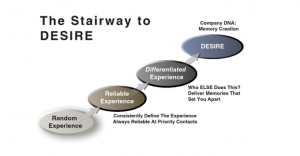Why the fundamental process is still valid but the outcome can be more useful and meaningful
I’ve covered a lot of material in the last 2 years here in this blog. Most of the entries made reference to the planning, budgeting and analysis processes, all of which are key elements in any corporate finance department. We saw why these activities must take place year round and why analytics is critical. We also saw why we have to use a purpose designed software solution to perform these tasks and why spreadsheets and certain software applications that employ spreadsheet-like techniques, including use of formulas and links, are not the right tools to use.
A major discovery we made was the ability to accurately and completely forecast a company’s future financial health, through automated forecasts of its Balance Sheet and Statement of Cash Flows, with their derived forecasted financial ratios all of which provide insight that can only be gained by reviewing these future period financial statements, along with the forecasted P&L.
I’ve expressed my opinion that this entire process should be performed in finance and owned by the CFO, who along with the CEO and other senior managers are the direct users of the presentation data generated in the analytics process.
What about the budget process itself? Does it require any changes? Is the traditional workflow, including the departmental submissions, the reviews and subsequent iterations of the budget still valid and necessary?
Fundamentally, certain aspects of the budget process are still valid and necessary. Revenues must be forecasted in all divisions and business units and should include all product lines, with forecasting of new products and services, discontinuing existing products and services within the budget period where applicable, etc. Costs of inventory or services must be forecasted and clearly shown in the budget along the revenues they will generate. Operating Expenses and payroll must be budgeted and this is also true for capital expenditures and other miscellaneous income and expense. In order for a complete and accurate set of forecasted financial statements to be produced, all budget components must exist, be realistic and go though the review and approval process.
This implies that a review of all budget pieces submitted by regional managers, department heads and other responsible persons according to the organization structure must be conducted, revisions proposed and made, with final review and approval by management.
What is changing is how budget numbers are automatically calculated by the software and how future period financial statements and other management reports are generated and become available to users. Another major departure from traditional methods is the ability to seamlessly interface the planning and budgeting software to the company’s actual accounting general ledger, where actual period balances and even transaction level data can be automatically made available to the analytics software.
“Smart-Budget” software applications, such as Centage Corporation’s Budget Maestro with Analytics allows the budget to be developed from plan assumptions and user data, in combination with drivers and built-in business rules (e.g., cash for product A sales is collected in 30 days following the sale but in 60 days for Product B). Since there are no formulas, functions or links required anywhere in the program, budget administrators only need to rely on approved business units’ submissions of their budget data and the company’s selected business rules and applied drivers and other assumptions in addition to correct assignment of budget lines to G/L accounts, correlating to actual G/L accounts used in the company’s accounting system.
As each major area in the budget is entered in the system (e.g., Revenue and Cost, Personnel Expenses, Operating Expenses, Fixed Assets, etc.), the system automatically applies the selected business rules, drivers and G/L account assignments to produce, in real time, forecasted financial statements resembling the company’s actual financial statements. These reports, including an Income Statement, a Balance Sheet and a Statement of Cash Flows, plus any number of other desired reports, represent the state of the budget in any given point in its creation cycle and for each period in the budget. As changes to the budget are made, all reports are automatically updated. With different versions of the budget, and employing “What-If” scenarios, the output, including all presentation reports, graphs and other visual displays set up in the Analytics module, immediately respond to the requested data.
Summary
You can keep the annual budget process the same, but make sure you receive reliable and approved data from business units. Be sure to include all G/L accounts in the budget process (some will automatically be calculated), as it will ensure that you get complete and accurate forecasted financial statements. When applying business rules and assumptions, combined with use of drivers, you will essentially experience an extension of the company’s actual accounting into future periods.
Using analytics to display all key data and “seeing” future period balance sheets and statements of cash flows is the closest you can come to using a crystal ball to predict the future of the business. Remember that the output is only as accurate as the data supplied to the system and use of reasonable assumptions and drivers. However, there is a major and profound difference between this method and the traditional way where only revenue and expenses were part of the budget.
Although the basic functions of the budget preparation process and workflow remain unchanged, there are many valid and completing reasons why the traditional way of using the budget data output is no longer a viable option. More and more organizations are discovering that having the ability to forecast what the financial health of their companies is going to look like in future periods gives them the ultimate control of their companies’ destiny.
(108)






